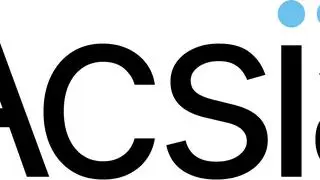When Uber entered the Indian market in 2013 it had its task cut out. There was a big competitor in the form of Ola, the consumers were still new to use of technology for transportation and there was uncertainty in the regulatory environment. Two years later, Uber is still facing regulatory challenges but has grown rapidly to be within striking distance of catching up with its biggest rival in India – Ola. BusinessLine met Eric Alexander, President of Business, Asia at Uber, to know the company’s outlook and game plan.
After two years in India, how do you see your growth here?
China and India are the fastest growing markets for us. We always knew that market in India was huge. When we came in Ola was the giant with over 90 per cent market share. We had to get right partnership, rights employees and scale it up. We spent a lot of time doing that. The growth since has blown us away.
How is Indian market different from other markets?
In terms of user behaviour, Indian market adopted faster than anywhere else in the world. We had to work hard to educate people and addressed challenges like cashless transaction because of low credit card penetration. So we did cash payments in India for the first time in the world.
India also has among the longest drive time in the world due to huge traffic problems in cities like Delhi where riders spend an average of 40 minutes each ride. Biggest challenge in India was to get the payment right. We had to implement payments with Paytm and that’s helped out a lot. The other challenge was to get more drivers as users grew
Last year, you said Uber is growing at 40 per cent month-on-month. Has the growth rate picked up?
We are keeping with that growth rate which we had said last year. Last year, we were sub-30 per cent of the market. We are now at 50 per cent. We are growing faster than competition.
Have the regulatory challenges dampened some of your growth?
India has big population concentrated in cities. Unless you can change consumer’s travel pattern, you cannot solve issues with traffic and congestion. We have done that with car pool product in various cities. This saves carbon emission, helps in solving congestion. Every Government wants that.
We understand traffic data and we have data on how people move. It was tough in the beginning because everyone saw as a taxi company but actually we are using technology and data to make people move more efficiently. I am impressed with the pace at which the Indian government has moved. Hopefully, it will go faster.
It gets easier as people understand what we do. We would be interested in smart cities project and whatever we can do to make transportation better.
How do you see the global alliance between Ola, Lyft, Didi Kuaidi And GrabTax?
Such global alliances don’t work. The way cities grow is from inside. I win a city like Mumbai when I can provide safe, reliable transportation. That’s where the volume comes. Around 140 million people travel out of China but there are more within the cities. Fact is I already have a global product so if you go to the US you can still use Uber. I get the purpose of the alliance but I don’t see the practicality of it as one giant competitor.
When do you overtake Ola?
We will be there in less than a month. We are right there. Ola launched a number of things including delivery. You do those things like Uber Eat and Uber Rush when you reach a stable market. Last thing I want to do is to deliver lunch but make a rider wait for more than 5 minutes. Car pool, for example, is super important for us here India. Of course, we will launch products that keep people happier.
Can India become your largest market?
China is on fire and growing very rapidly. Their user adaption is quick. India is catching up though.
That’s why we have invested in India to grow the business. You will see some big announcements that moves the needle. Our API programme is way ahead. Integration of Zomato and Practo with Uber is working. You will see more such partnerships over next couple of weeks.
Any plans to invest in Indian start-up ecosystem?
We put our dollar in core business. But we do encourage the start-up environment. We built this platform that allows micro-entrepreneurs. We create mentorships by taking them to other cities such as San Francisco to help with building entrepreneurship.
What worries you?
The craziness of capital market would dry up sometime. Capital market is nice now as you can go raise money.
However, you have seen some of valuation in India roll back so that did scare me. We are tightening screws and we are profitable in a lot of places.
So now I can take our mature business to raise fund for a market like India. It’s a problem but doesn’t keep me up much now that we have executed well.







Comments
Comments have to be in English, and in full sentences. They cannot be abusive or personal. Please abide by our community guidelines for posting your comments.
We have migrated to a new commenting platform. If you are already a registered user of TheHindu Businessline and logged in, you may continue to engage with our articles. If you do not have an account please register and login to post comments. Users can access their older comments by logging into their accounts on Vuukle.